Alligator/crocodile 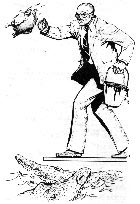
|
|
Damage Class |
|
|
| 16-17 | C | 2 wound levels | 351-430 |
|
|
|
|
|
|
|
|
|
|
|
|
|
|
|
|
|
|
|
|
|
|
|
|
|
Dexterity: Represents the animals agility for determining evasion,
reaction time, running speeds, leaping, traversing rough terrain,
and maintaining balance. Unlike the characters in the game, this value implies
nothing about manual dexterity.
Perception: Represents the animal's
senses to detect disturbances or intruders into their environment. Many of the
animals have a sixthsense ability based on their acute senses of sight, hearing,
smell or vibration.
Speed: This is a derived characteristic from the
sum of the perception and dexterity. Animals have a speed characteristic just
like any other character (see p23 basic rule book), however this value is mostly
used to determine the draw at the beginning of the round and not the number of
attacks the animal receives. Each natural weapon entry for the animal notes the
maximum number of attacks which can be performed in a given action round.
Lastly, almost all animals will have a speed that ranges from 0 to 3, however a
few rare creatures may have a PER+DEX sum above 30, and thus have a 4 speed.
|
|
|
|
|
|
Willpower: Measures the animals endurance to withstand pain and
physical damage, but also measures its ability to intimidate, exercise stalking
discipline during hunting, or how long it it can run with it out tiring. The
secondary parameters of Stamina and Running/swimming are determined by the WIL
characteristic as described in the basic rules, but a new parameter is added for
animals termed the Fight/flight response . Animals with high willpower
are able to continue fighting or evading after they have been dealt an
incapacitating wound or kill result. This fight/flight
parameter is measured in the number of action rounds after the animal
receives a IN or KL result, that the wounded animal can stay conscious before
collapsing, or expiring respectively.
|
|
(in hours) |
(in minutes) |
(action rounds) |
| 16-17 |
|
|
|
| 18-19 |
|
|
|
| 20 |
|
|
|
| 21 |
|
|
|
| 22 |
|
|
|
Size: This is a new characteristic added to represent how the mass of
animals in the game influence the game mechanics. Mass effects the rules in two
ways, first how much more physical damage a animal can take due to size and
second the force rating of the animal (compared to all animals). A massive
creature can take much more physical damage to wound it. The size parameter is
actually measured in how many wound levels an individual creature can withstand
before dying. All humans in the game have 5 wound levels (LW to KL) they
can withstand before death, and therefore they always have 5 SIZ. Thus creatures
with a higher SIZ than 5 will not die from a kill result (5 wound levels), since
they still have one or more wound levels left. Thus all the wounds scored on
animals with greater than 5 SIZ must be converted to wound points that are
subtracted from the SIZ of the creature to determine its current wound status
(see table below).
| Damage Result |
|
|
|
|
|
| Wound Points |
|
|
|
|
|
This conversion makes the actual wound status of the creature difficult to interpret, since the designations of the wound level no longer apply to massive creatures. Therefore the SIZ number must be allocated to each of the 5 possible wound categories of the creature, by first dividing them equally among the five levels and than adding the remainder one by one to each of the lesser wound categories. The nomenclature of this rule is dividing the points for each wound category by a backslash ( LW/MW/HW/IN/KL ). Examples are given below....
Animal
LW/MW/HW/IN/KL
Human with 5
SIZ
1/1/1/1/1
Bear with 9
SIZ
2/2/2/2/1
Shark with 11
SIZ
3/2/2/2/2
Elephant with 16
SIZ
4/3/3/3/3
Thus before the elephant above could take a LW, 4 wound points would have to be inflicted, the equivalent of an incapacitation result for a human. The same elephant would have to take another 3 wound points to suffer a MW, and another 3 to suffer a HW. At this point a human would have been killed twice over. This makes massive creatures very difficult to kill without considerable fire power, which is likely why poachers of Elephants and Rhinos use automatic rifles. Note that a character can still make a specific shot, which increases the wound points inflicted by 2.
Force Ratings of creatures can easily be determined
by size(see size chart below). These force ratings are relative to other animals
or characters. Note that if these force ratings are used against vehicles
subtract 2.
| Animal's SIZ | Force Rating |
| 1 to 4 | 0 |
| 5 or 6 | 1 |
| 7 | 2 |
| 8 | 3 |
| 9 | 4 |
| 10-11 | 5 |
| 12-13 | 6 |
| 14-15 | 7 |
| 16+ | 8 |
Animal Skills
Animals don't have skills in
the traditional sense, however they many have skill like abilities which are
determined the same way. Each animal description has a group of skills which
describe the abilities of the animal and give the characteristic formulae to
calculate the primary chance. Note that each skill may be determined by a
different method, depending on the animal. Some may have different names than
traditional skills in the game, but it is easy to tell what skills they
represent.
Animal Abilities
Certain members of animal
groups may have unique abilities which are mentioned in their primary
description. These abilities are described under the list of skills and
represent adaptive specialization's of a particular species
Animal Armour
Some animals have particularly
thick hide which protects them from physical damage. Under the armour heading
will be a numerical point value which represents how many DC levels a particular
attack is lowered before damage is determined. Additionally some animals
will have a separate wound level entry below armour which represents how many
wound levels are subtracted from any type of wound result to the animal. Note
that any damage class from a firearm of I or greater ignore this wound level
subtraction (this is determined for the weapon before damage class is lowered by
armour points). i.e. Thus an elephant attacked with an automatic rifle
DC=L, wound subtract 6 DC levels from the rifle to DC=F. However, since
the firearm is above DC=I the wound level is not reduced.
Animal Natural Weapons
All the natural
attacks of a particular animal are listed with the primary chance of attacking
(HTH PC), DC of the attack ( HTH DC ) and speed of the attack. Each of these PCs
have a characteristic formula which is unique to the natural weapon type. The
damage class is determined as previously described under strength, and speed is
determined as per the basic rules.
Alligator/crocodile 
These evolutionary remnants from the days of dinosaurs are
deadly predators to animals and man. Most often in the game they will be
present as groups in tropical marshes or rivers, but may be encountered in
captivity or even in sewers. They make a good barrier to prevent unwanted
visitors from entering an area.
Q-Evaluation:
Crocodiles have been encountered infrequently by agents in the field, and have
proved to be a formidable threat. Surprisingly the Crocodile submersible is the
most effective way of preventing an attack when traveling through water infested
with these animals. This tactic of avoidance, rather than confrontation or
neutralization is the best way to deal with animal threats in the field, and
forms the basis of any teaching I do at MI6. -Dr. Martha
Englewood.
Game Information:
Statistics for alligators and crocodiles have been adapted from the "Live and Let Die" and "Octopussy" modules respectively.
Arachnids 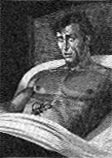
Many poisonous arachnids exist, which the opposition can use to
terrorize agents infiltrating a fortress, staying in their room, or being
tortured. It is best to be inventive in how the creatures are used or sprung on
a character, to keep them guessing.
Q-Evaluation: Although they are not that deadly, spider poison
which is able to distract agents from their mission in order to seek medical
aid. Also, the constant irritation of a painful bite decreases overall
performance in the field. Antivenin works to stop fatality but not the the
distraction. Thus our main counter-measure is a solvent (disguised as hairspray)
which can be sprayed on such creatures to quickly dehydrate their exoskeleton,
and kill them. Q-branch has affectionately called this invention
bug-spray.-Dr. Martha Englewood.
Game
Information: These creatures are not given typical statistics since they
would be meaningless for such small animals. Also any blow of LW or greater will
dispatch these animals.
All the arachnids above have been reproduced from the "Dr No" module or the "Thrilling Locations" supplement, and are here for convenience and completeness.
Bears 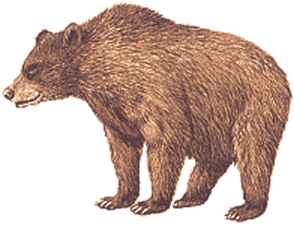
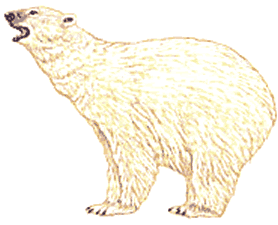
These noble creatures have been idolized for their strength ,
endurance and ability to survive throughout many ecosystems. The habitat of the
bear is often threatened by the approach of man, and many settlements close to
the wilderness may have regular visits from the animals at garbage dumps or just
wandering through. Generally this close proximity of Bears is not a threat, and
only occasionally do these animals consider man prey. The one exception is when
people are in between a mother and its cub, which will often produce a violent
response, since bears have few offspring during their lives. Many nations with a
large bear population try to actively protect them, since the gal bladder is
prized on the black market and many bears are killed by poachers solely for this
purpose. In some areas of the world the collection of this product is carried to
extremes, since the bear is kept sedated in captivity with a catheter inserted
in the gal bladder in order to harvest the bile. Such animals do not live long
due to the extreme stress of the harvesting.
Q
Evaluation: Import of Bear products is actively monitored in England, and
any suspected smuggling rings are investigated at their origin by MI6. One of
the most disturbing reports is that TAROT keeps a bear farm for bile harvesting
somewhere in Asia, which helps finance many of their schemes. I have developed a
surgical protocol in order to safely release these animals from this intrusion,
but the stress the animal is put under during their captivity often leaves the
animals so disturbed that they have to be destroyed . If the TAROT instillation
is ever located I will likely start a bear recovery program, but resources for
such activities are scarce. -Dr. Martha Englewood.
Game Information:
STR:
14
+2D6
15
+2D6
17 +2D6
DEX:
3
+2D6
8
+D6
2 +2D6
WIL:
10
+D6
12
+D6
13 +D6
PER:
2D6
1+2D6
2D6
SIZ:
6-7
7-8
8-10
Abilities:
Climb
Swim
Evasion
Camouflage
Armour:
3
points
3
points
4 points
* The maximum attacks in a round for a bear is 2 regardless of speed. A claw or bite is determined by a 50% chance determined before each attack is made. A Hug is achieved when 2 claw attacks succeed with a QR values which total 4 or less, i.e.. 3 and 1, or 2 and 2. The attack is free and is made with no regard to attacker's speed.
Canines 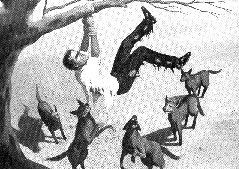
There are many more species of dogs that cannot be accounted
for here, so the GM is encouraged to make their own species, such as Blood
hounds or Pit bulls. For the most part agents will encounter dogs as part of the
defenses of the opposition, or in the wilderness. Dogs are known as generalists
and can survive in all types of terrain, and can eat practically anything, but
are also well adapted to co-exist with man.
Q
Evaluation: Perhaps the most common animal threat in the field, many agents
have been wounded by guard dogs, and in some situations tracked down and
captured. We have developed many counter measures at Q-branch to overcome canine
threats. To prevent immediate attack a key chain fitted a device capable of
giving a high pitched subsonic burst, is able to temporarily disable all dogs in
the radius, allowing an escape. However it is more useful to avoid to detection
by these animals, so many other countermeasures have been developed. –Dr
Martha Englewood
Game information:
STR:
D6+SIZ
D3+7
D3+7
D6+7
D3+11
DEX:
2D6+3
D3+12
D3+12
D6+9
D6+7
WIL:
2D6
D3+7
D3+9
D6+7
D3+10
PER:
2D6+3
D3+8
D3+10
D6+8
D3+6
SIZ:
D6
D2+2
D2+3
D2+3
D2+3
Abilities:
Jumping
Sharp
Senses
Tracking
+1DC
up to
4’
+1
DC
+1
DC
Attack
Armour:
1 point
Statistics for the Dingo and German shepherd are reproduced/
adapted from the "Back of Beyond" and "Dr. No" modules respectively.
Elephant 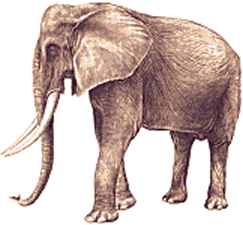
Physically the elephant is impressive to behold, towering above
and weighting more then any other terrestrial mammal. In the wild elephants
travel in herds, which have complex social structures and hierarchies. However
in some countries such as India the animals have been domesticated and make
powerful mounts or pack animals. These animals are endangered species, mainly
due to hunting by poachers, since their ivory tusks are worth a lot on the black
market. Several African countries maintain protected parks for herds of these
animals, which must be vigilantly patrolled by wardens. Both poachers and
wardens are usually well armed with automatic rifles and body armour, giving the
protection of the parks the same appearance as a battlefield.
Q Evaluation: I teach advanced animal handling and elephant
riding at the Oberai Shikarbadi reserve to agents who wish to learn. When the
reserve was confiscated some years ago, several glorious elephants were left in
my care and I have fallen in love with their gentle nature. Although trained for
hunting expeditions, they were well taken care of by Kamal's people and I find
that many MI6 personnel treat them like family. In particular 004 has
taken a keen interest in the protection of elephants. I believe that his disgust
at watching TAROT poaching such creatures has made him an avid activist. In fact
004 has received royal approval for missions in Africa which are top secret even
to MI6, but involve elephant preservation. -Dr. Martha
Englewood
Game Information:
Felines 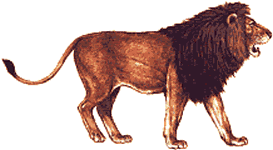
Unlike dogs, the great cats tend to be specialists in a given
environment, and have adapted to the hunting of specific prey. Thus their
likelihood of attacking man in the wild is low, but it is well documented that
it does occur. Agents will more likely encounter such beasts in captivity, being
used for malign purposes.
Q-Evaluation: Our
only record of agents encountering these cats in the field is by 007, who
reported he a had a run in with a Bengal tiger on Kamal Khan’s hunting reserve,
the Oberai Shikarbadi in Udaipur India. Fortunately this endangered species
which was used to stock the reserve is now safe, since the Indian government
confiscated the reserve and it is now protected. I, have the fortune duty of
acting as liaison and advisor to the Indian authorities with regard to this
preserve, and it makes for an excellent holiday for a week each year . I ‘m
proud to say that a community of these cats is now able to enjoy the jungle in
the area, and it acts as an excellent training ground for advanced jungle
survival courses which I co-ordinate every year for MI6 agents. I teach how to
avoid confrontations with the tigers as a model for avoiding dangerous wildlife
in other environs. –Dr. Martha Englewood
Game Information:
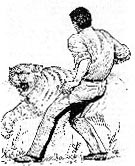
Horses 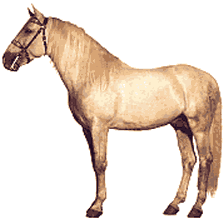
There are many breeds of horses, each breed for centuries for
certain niches of human use, such as draft horses, others for riding, and some
for war. However, horse use in the modern era is most often reduced to leisure
or sport riding. There still is a diverse array of horse breeds which are used
for various aspects of show jumping, racing and other equestrian sports. Horses
used in military roles still exist in some bands of guerilla soldiers in remote
locales such as the Middle east and Mexico, while some police forces still
maintain a mounted force for inter-city use such as New York or Toronto.
Q Evaluation: One of the covers of the British
secret service is at equestrian events through out the world, the shipping of
massive tonnage of horses and tack, is an easy way of smuggling Q-branch
equipment into sensitive areas. This cover has proved to be very effective again
and again., especially since the legit members of the team are also present, and
Cpt. Michael Roberts is a well known secondary rider on the English team..
Therefore I maintain a score of high quality horses for MI6, that are used for a
variety of events, and the area which they are stabled acts as a training ground
for agents which want to learn to ride. Horses have also been used in the field
extensively, often in remote areas, such as Afghanistan, India, the Middle east,
North America, Australia and parts of South America. –Dr. Martha
Englewood.
Game Information:
PM Racing:
(DEX+WIL)/2
Show/Trick
(PER+DEX)/2
Jumping (STR+DEX)/2
+3
16+
13+
21+
+2
14-15
11-12
18-20
+1
11-13
9-10
15-17
0
8-10
6-8
12-14
-1
7-
5-
11-
Skills: Various aspects of horse movement and
capabilities are based on a character's riding skill, and are modified by Pas
according to various tasks.
*These attack forms are
included only for completeness, and a horse will only use these when agitated or
in danger . In some circumstances involuntary attacks may be a natural response,
in which case the PC is halved. A rider may use their horse to attack with a
rear (EF=4), followed by a plunge on opponents (EF=3-spd of target), both based
on riding skill. The rear must receive a QR=3 to continue, while the plunge QR
determines a hit with the horses DC rating.
#
This attack form is always involuntary, and becomes more dangerous as the
number of horses increases. A stampede's PC starts at half the PC of the lead
horse and increases by 1 for each additional horse (Maximum of 30). The DC
increases by 1 for each 2 additional horses in the stampede (Maximum of L).
Evasion of a stampede is the same as a chase, except the bid is predetermined by
the number of horses, it starts at 7 and is reduced by 1 for every 3 additional
horses.
A rider may trample an
opponent by making the equivalent of a force maneuver with an EF determined by
the bid, and people on foot are considered to have a 1 force rating while a
horse has a 2 or 3 (see size above). The resolution of damage is determined by
the horse's PC in trample.
·
These attacks are included to emphasize the advantage of a mounted attacker.
They represent different speeds of the mount and the resulting effects on a
attack's damage. To achieve these these bonuses a EF=3 riding role must be
achieved for a charge, and a EF=4 for a mounted attack, after which attacks with
the indicated damage bonus may be conducted for the round.
Rhinoceros 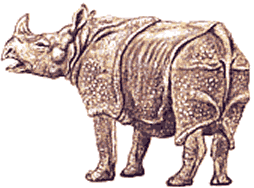
This powerful and aggressive animal is now found primarily in
animal preserves in Africa, as well as zoos around the world. It has been hunted
to near extinction due to the value of its ivory horns.
Q Evaluation: I did part of my graduate work organizing an
African Black Rhino breeding program by both natural and in-vitro fertilization
programs. Unfortunately the birthrate in captivity is small, and those few
Rhinos born have a poor survival rate. Thus, being close to the plight of the
nearly extinct Black Rhino, I was horrified by a field report by 004 who
witnessed the poaching of a Rhino by Major Nicholas Burke's commando team as
part of financing operation for TAROT. 004 was amazed how much punishment by
automatic weapons it was given to the animal before it expired, and was sickened
by the pillaging of only its horns after. Thankfully 004 was able organize the
downfall of Burke's mercenary efforts in Africa, and the section head has since
fallen out of favour with his own organization.-Dr. Martha
Englewood.
Game Information:
Sharks
These killers from the oceans of the world are perhaps the most
encountered animal threat in the James Bond mythos. These are almost
always encountered as the pets of the Major Villain and used to dispose of
agents or others who attempt to mettle in their schemes. The specific species is
of little importance for game purposes, it is the shear terror of being mauled
by such a mindless killing machine which is most emphasized. It is generally
suggested that the size of the shark be chosen based on the agent's rank for
game purposes, thus 3 Shark sizes are given which could be various species or
smaller versions of the same species.
Q
Evaluation: No agent has encountered more sharks in the field than myself. I
think the best trick to deal with these killers is to avoid a direct
confrontation all together, especially in open water or in a enclosed pen.
Unfortunately, many of the sociopaths which I encounter in my work feel the pure
animal savagery of the shark best reflects their hate. If I'm expecting
such a beast, I'll take a good harpoon gun, a Glock modified for under water use
and shark repellent. Of course most times I have encountered sharks I only had
my wits and gifts from Q-branch. Considering I still have all my limbs is a
testament to innovative gagetry.-007.
Game
Information:
All shark sizes are reproduced/adapted from statistics
presented in the "For Your Eyes" , "Villains", and "Live and Let Die" modules
respectively.
Snakes 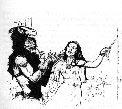
Poisonous snakes are usually rarely encountered, however the
major villains in the game will often have the resources to acquire them.
Q-Evaluation: see Q-manual p118-119.
Game Information:
The Black mamba is reproduced from the "Live and Let Die"
module & "Thrilling locations" supplement, while the Tiapan and Death adder
are from the "Back of Beyond" module.
Dr. Martha Englewood
BIRTH DATE: 10 November 1959
BIRTHPLACE: Lock Nes,
Scotland
STR: 6 DEX: 11
WIL: 8 PER: 12 INT: 13
SKILLS
Charisma (7/15), Diagnosis (11/23)*,
Diving (3/11), Driving (2/13), Fire Combat (3/14), Local Customs (6/18),
Mountaineering (5/13), Riding (12/22), Science (12/25), Stealth (7/15), Survival
(13/24)*, Tracking (3/15)*
ABILITIES:
Connoisseur, First Aid, Photography
| HEIGHT: 5' 8" | SPEED: 2 |
| WEIGHT: 140lbs | HAND-TO-HAND DAMAGE CLASS: A |
| AGE: 40 | STAMINA: 28 hours |
| APPEARANCE: Good Looking | RUNNING/SWIMMING: 25 minutes |
| FAME POINTS: 60 | CARRYING: 101-150 pounds |
| HERO POINTS: 3 | WEAPON: Hunting Rifle, with tranquilizer darts (use number 4 rifle with sight) |
* These new skills and fields of experience appear on this web site.
BACKGROUND:
Although born in Scotland,
Martha's family moved to Canada when she was a child, so that her father could
find work as a Vet in rural Ontario. Martha was an avid outdoors enthusiast and
went on many backpacking and canoeing trips into the bush of the Canadian
shield. She also acted as a guide in this area as a summer job, while she was
doing her undergraduate degree at Guelph university in Toxicology. Upon
graduating she followed in her father's foot steps and continued her education
as a veterinarian at Guelph. Considering how much she learned by working with
her father she was terribly bored at school. Instead she spent more time at her
passion of horse jumping and won several region competitions. After she
graduated from Vet. collage she felt unchallenged and so started studies for a
Ph.D. in Zoology. As part of her training she spent time at the London Zoo
where she became known to MI6 as a consultant on conservation and animal related
pharmacology. This led her to be asked as a consultant to an investigation
in Ireland, where a wealthy industrialist was suspected of doping or using drugs
to enhance his horse's performance. She was acting as a contact for a Rookie
investigator, who on her advice entered the stable to find hard evidence.
Unfortunately the agent was captured by thugs during the investigation, and
Martha fearing for his life snuck up with a tranquilizer gun and cattle prod (
found in the stables ) and neutralized the thugs. This act of bravery was noted
by MI6.
Soon after this event Martha wrapped up her
studies and started a dreary Vet. practice looking after rich people's geriatric
pets in Toronto. Q-branch soon missed the advice of Martha and had other
problems such as the responsibility of a wildlife preserve in India thrust upon
it. Additionally, after several deaths in the field caused by animal threats, Q
was determined to devote a wing of Q-branch to deal with animal
counter-measures. He visited Martha, and over a cup tea, the animal
counter-measures and conservation division of MI6 was born. Since than Martha
has acted as a Vet. for the English equestrian team, custodian for the Oberai Shikarbadi in Udaipur India, and act as an instructor
for survival and conservation . Additionally, Martha
advises a group of agents devoted to investigating conservation, poaching, and
smuggling. Martha doesn't spend a lot of time in the Q-branch working area, but
gets along with all its members especially Q, who she drags fishing every once
in a while. Q is happy for the distraction and regards Martha as an adopted
daughter.
1) Conservation Campaign: A campaign based on the characters specializing in the investigation of the trafficking in animal parts and other issues may suit the flavor of some games. I would suggest that all the characters chosen for this style of game be of Rookie or Agent Rank, and once they advance to the next rank they move on to another type of assignment. The major villains would have a wide variety of different motivations why they are trafficking, the money could be backing almost any agenda. Some of the operations may be a way for organizations such as TAROT to make illegal profits. Many of these scenarios would involve poaching, smuggling, or infiltration of facilities with captive animals.
2) Oberai Shikarbadi: The hunting preserve in India could be the location for a teaser or training style mission for the characters. Dr. Englewood may wish to check the health of the great cats on the preserve, and so enlist characters to attempt and stalk and tranquilize several tigers.
3) Equestrian Event: The characters may be required to use such an event as cover for an operation in a foreign country with tight restrictions on what can be imported across the border. It would be made interesting if the character was also a good rider for a particular event, which they could compete in during the coarse of play (i.e. for Hero points and maintaining a cover). Such an event could be made more complicated by adding in a major villain such as Max Zorin, who gives his horses performance enhancing drugs to cheat.
4) Free wild animal: A dangerous wild animal is free in a city or town
which the PCs must hunt and tranquilize. Such a creature could have been
released by a major villain as a distraction, or could just be a random event
when the characters are in the local area.